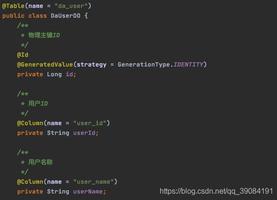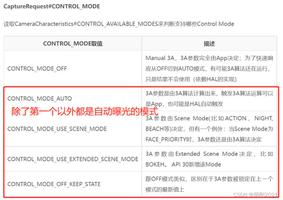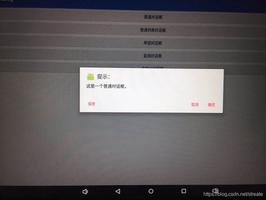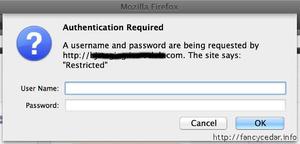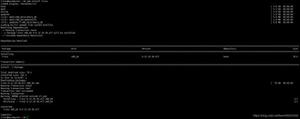Android getReadableDatabase() 和 getWritableDatabase()分析对比
Android getReadableDatabase() 和 getWritableDatabase()分析对比
Android使用getWritableDatabase()和getReadableDatabase()方法都可以获取一个用于操作数据库的SQLiteDatabase实例。(getReadableDatabase()方法中会调用getWritableDatabase()方法)
其中getWritableDatabase() 方法以读写方式打开数据库,一旦数据库的磁盘空间满了,数据库就只能读而不能写,倘若使用的是getWritableDatabase() 方法就会出错。
getReadableDatabase()方法则是先以读写方式打开数据库,如果数据库的磁盘空间满了,就会打开失败,当打开失败后会继续尝试以只读方式打开数据库。如果该问题成功解决,则只读数据库对象就会关闭,然后返回一个可读写的数据库对象。
源码如下:
/**
* Create and/or open a database that will be used for reading and writing.
* Once opened successfully, the database is cached, so you can call this
* method every time you need to write to the database. Make sure to call
* {@link #close} when you no longer need it.
*
* <p>Errors such as bad permissions or a full disk may cause this operation
* to fail, but future attempts may succeed if the problem is fixed.</p>
*
* @throws SQLiteException if the database cannot be opened for writing
* @return a read/write database object valid until {@link #close} is called
*/
public synchronized SQLiteDatabase getWritableDatabase() {
if (mDatabase != null && mDatabase.isOpen() && !mDatabase.isReadOnly()) {
return mDatabase; // The database is already open for business
}
if (mIsInitializing) {
throw new IllegalStateException("getWritableDatabase called recursively");
}
// If we have a read-only database open, someone could be using it
// (though they shouldn't), which would cause a lock to be held on
// the file, and our attempts to open the database read-write would
// fail waiting for the file lock. To prevent that, we acquire the
// lock on the read-only database, which shuts out other users.
boolean success = false;
SQLiteDatabase db = null;
if (mDatabase != null) mDatabase.lock();
try {
mIsInitializing = true;
if (mName == null) {
db = SQLiteDatabase.create(null);
} else {
db = mContext.openOrCreateDatabase(mName, 0, mFactory);
}
int version = db.getVersion();
if (version != mNewVersion) {
db.beginTransaction();
try {
if (version == 0) {
onCreate(db);
} else {
onUpgrade(db, version, mNewVersion);
}
db.setVersion(mNewVersion);
db.setTransactionSuccessful();
} finally {
db.endTransaction();
}
}
onOpen(db);
success = true;
return db;
} finally {
mIsInitializing = false;
if (success) {
if (mDatabase != null) {
try { mDatabase.close(); } catch (Exception e) { }
mDatabase.unlock();
}
mDatabase = db;
} else {
if (mDatabase != null) mDatabase.unlock();
if (db != null) db.close();
}
}
}
/**
* Create and/or open a database. This will be the same object returned by
* {@link #getWritableDatabase} unless some problem, such as a full disk,
* requires the database to be opened read-only. In that case, a read-only
* database object will be returned. If the problem is fixed, a future call
* to {@link #getWritableDatabase} may succeed, in which case the read-only
* database object will be closed and the read/write object will be returned
* in the future.
*
* @throws SQLiteException if the database cannot be opened
* @return a database object valid until {@link #getWritableDatabase}
* or {@link #close} is called.
*/
public synchronized SQLiteDatabase getReadableDatabase() {
if (mDatabase != null && mDatabase.isOpen()) {
return mDatabase; // The database is already open for business
}
if (mIsInitializing) {
throw new IllegalStateException("getReadableDatabase called recursively");
}
try {
return getWritableDatabase();
} catch (SQLiteException e) {
if (mName == null) throw e; // Can't open a temp database read-only!
Log.e(TAG, "Couldn't open " + mName + " for writing (will try read-only):", e);
}
SQLiteDatabase db = null;
try {
mIsInitializing = true;
String path = mContext.getDatabasePath(mName).getPath();
db = SQLiteDatabase.openDatabase(path, mFactory, SQLiteDatabase.OPEN_READONLY);
if (db.getVersion() != mNewVersion) {
throw new SQLiteException("Can't upgrade read-only database from version " +
db.getVersion() + " to " + mNewVersion + ": " + path);
}
onOpen(db);
Log.w(TAG, "Opened " + mName + " in read-only mode");
mDatabase = db;
return mDatabase;
} finally {
mIsInitializing = false;
if (db != null && db != mDatabase) db.close();
}
}
感谢阅读,希望能帮助到大家,谢谢大家对本站的支持!
以上是 Android getReadableDatabase() 和 getWritableDatabase()分析对比 的全部内容, 来源链接: utcz.com/z/353190.html


